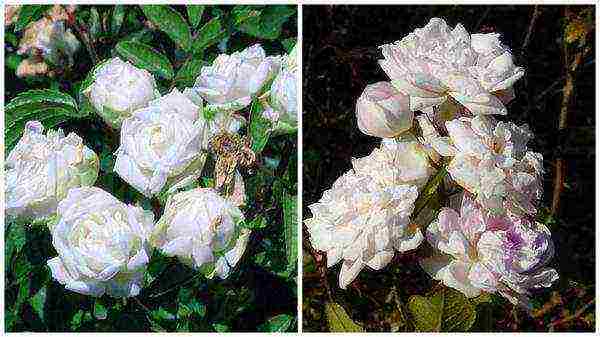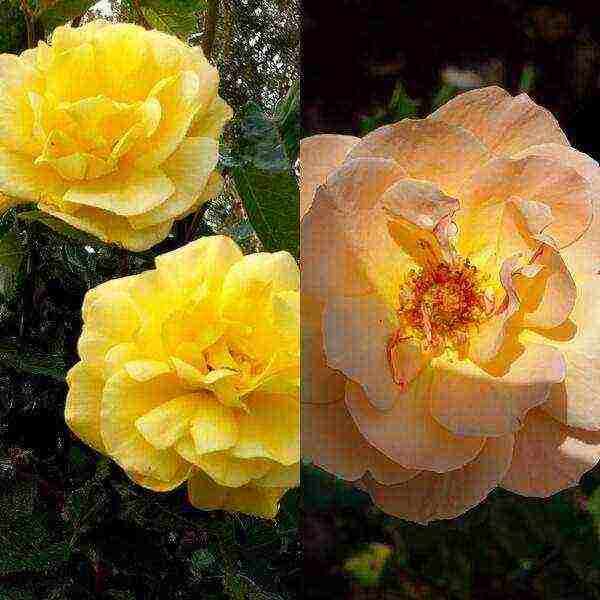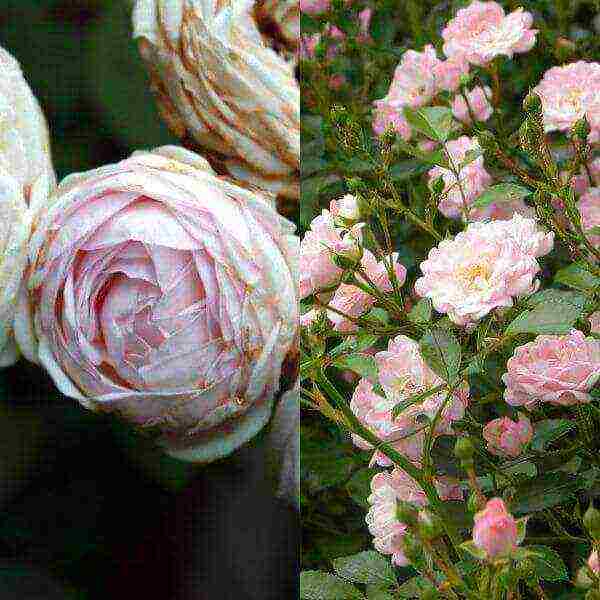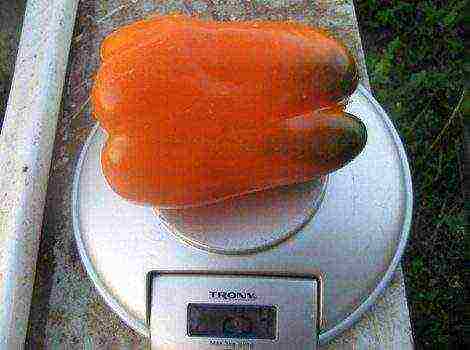Content
- 1 What are polyanthus roses
- 2 Advantages (pros) Polyantha-Rose
- 3 Cons of Polyantha-Rose
- 4 Origin of Polyantha-Rose
- 5 Use of Polyantha-Rose in summer cottages
- 6 Polyantha-Rose 'Fairyland'
- 7 Polyantha-Rose 'Lady Reading'
- 8 Polyantha-Rose 'Marjorie Fair'
- 9 Polyantha-Rose 'Mevrouw Nathalie Nypels'
- 10 Polyantha-Rose 'Orange Triumpf'
- 11 Polyantha-Rose 'The Fairy'
- 12 Polyantha-Rose 'Yesterday'
- 13 Polyantha-Rose 'Yvonne Rabier'
- 14 Polyantha-Rose ‘Kubinochka’
- 15 Polyantha-Rose ‘Kharkovchanka’
- 16 Description of the group of polyanthus roses
- 17 Varieties of polyanthus roses, popular in the Moscow region
- 18 Varieties of polyanthus roses
- 19 The best varieties of polyanthus roses and their photos
- 20 About planting poleanthus roses and their subsequent care
We continue our acquaintance with the prima donnas of the pink kingdom. Today, 10 of the most luxurious polyanthus beauties of the world assortment will parade in front of you.

Polyanthus roses are truly luxurious. Their advantages are countless, see for yourself!
What are polyanthus roses
These are multi-flowered roses, the varieties represent today a completely independent group (see the post Modern garden roses).

Polyanthus roses.
It would seem that here they are - flawless roses with beautiful leaves, abundant long flowering, red or orange small fruits, easy to care for ... But spoiled by the beauty, shape, size, large flowers of hybrid tea roses, fragrant with sensual and fruity aromas, we give preference for their varieties.

Polyanthus rose ‘Orange Triumpf’,
Advantages (pros) Polyantha-Rose
- the habit (appearance) is rather compact,
- these are low deciduous shrubs;
- leaves are glossy;
- predominantly double flowers of pink and red color are collected in racemose inflorescences; they are not large, but there are many of them;
- with appropriate care (regular watering, top dressing), the flowering is luxurious, long-lasting: the first flowers bloom at the beginning of the summer season, and the last ones - at the end of autumn (the southern coast of Crimea and the Black Sea coast of the Krasnodar Territory);
- they winter well, but after planting for the first 1-3 years, you need to insure yourself and cover them with spruce branches or build an air-dry shelter on arcs;
- they are practically not cut off, especially if they are used as ground cover shrubs; slightly trimmed on the sides in the borders; shorten the shoots knocking out of the desired contour with a standard culture. Plus sanitary pruning, which is mandatory for roses;
- perfectly cut with green (June-July) and lignified (autumn) cuttings (own-rooted);
- used in various elements of the design of the suburban area;
- stand in cut for a long time (within 2 weeks) without losing color.
Cons of Polyantha-Rose
- odorless (although there are exceptions);
- small flowers;
- in the south, the petals slowly, but still fade in the sun;
- flowers are not self-cleaning, therefore, after flowering, they must be removed in time.
Origin of Polyantha-Rose
The first Polyantha-Rose were obtained in 1873 and in 1880 in France by the originator (as they say now) Jean-Baptiste Andre (1802-1882), who is better known as Pere Guillot.

Jean Baptiste Guillot,
There are two versions of getting them:
- from crossing Rosa chinensis and dwarf Rosa multiflora;
- from multi-flowered rose with multi-flowering Hybrid Tea.
The first forms were ‘Paguerette’, ‘Magnonette’.

The first polyanthus roses. ‘Paguerette’ variety,

Genealogical tree of the Guillot family, antique polyanthus roses 'Paguerette' and 'Magnonette',
Use of Polyantha-Rose in summer cottages
These are versatile roses that are good in single and group plantings, in flower beds - among perennials and annuals.

Polyanthus rose 'The Fairy' variety in mixborders. Photos from Alamy and foto.mein-schoener-garten.de Possibility of good cuttings and obtaining a large number of self-rooted roses of "the same standard" make them convenient for arranging curbs (undersized), hedges, flower arrays, use as ground cover shrubs.

Polyanthus rose variety 'The Fairy' solitaire,

Polyanthus rose ‘Yvonne Rabier’ in a tall pot,

Polyanthus rose ‘The Fairy’ in rockery,
So, we meet 10 polyanthus beauties, who seem to be covered with a veil, behind which lies a secret, often associated with a woman.
Polyantha-Rose 'Fairyland'
It is known that it was bred by Harkness in Great Britain in 1977, and was registered by him in 1980.

Polyanthus rose ‘Fairyland’.

Rose ‘Fairyland’
Nuances: pale pink rosette flowers with a delicate aroma.
Polyantha-Rose 'Lady Reading'
This is an old rose bred by Van Kleef (country unknown) in 1921. Most likely, it is dedicated to some educated woman.

Polyanthus rose 'Lady Reading' variety,
Nuances: flowers are red, double.
Polyantha-Rose 'Marjorie Fair'
It can be marketed as ‘Red Ballerina’ or ‘Red Yesterday’.

Polyanthus rose 'Marjorie Fair' variety and one of the richest ladies of the last century, Marjorie Merryweather Post.
Nuances: the flowers are bright crimson, the center is white.
Polyantha-Rose 'Mevrouw Nathalie Nypels'
This ancient rose was bred in the Netherlands in 1919, by whom it is unknown, dedicated to a certain Mrs. Nathalie (Nathalie Nypels); sometimes referred to in reference books and trade catalogs as a rose from the Floribunda garden group.

Polyanthus rose variety 'Mevrouw Nathalie Nypels',
Its parameters: height 75 cm, width 60 cm.
Nuances: pink semi-double flowers with a sweet aroma.
Polyantha-Rose 'Orange Triumpf'
The rose was bred in Germany in 1937 by one of the members of the pink dynasty of Kordes - Wilhelm II (Wilhelm J.H. Kordes II). May be marketed as Ground-cover bush.

Polyanthus rose ‘Orange Triumpf’ Its parameters: height up to 1 m, width 75 cm.
Nuances: red double flowers without aroma.
Polyantha-Rose 'The Fairy'
This rose was bred in Great Britain by Anne Bentall in 1932. It is loved not only by summer residents, but also by breeders; a whole range of 'The Fairy' style roses have been created on its basis. This is one of the most popular unpretentious varieties, which is more often used as a ground cover plant. It has no dormant periods between flowering waves. An excellent option for beginner growers.

Polyanthus rose 'The Fairy' variety,
Nuances: pink rosette flowers with a pleasant aroma.

Polyanthus rose 'The Fairy' in a large pot,
Polyantha-Rose 'Yesterday'
Bred in the UK in 1974 by Harkness. It can be purchased commercially as Rosa 'Tapis d'Orient', as a ground cover, and as a spray rose.

Nuances: rosette semi-double lilac-pink flowers endowed with a delicate aroma.
Polyantha-Rose 'Yvonne Rabier'
The nominal rose was bred in France, in 1910 by Eugene Turbat & Compagnie. Dedicated to a woman - Yvonne Rabier.

Polyanthus rose 'Yvonne Rabier' variety, photo from PPRuNe and Roses Guillo Its parameters: height and width 40 cm.
Nuances: creamy white double flowers with a light delicate aroma.
Polyantha-Rose ‘Kubinochka’
It was bred by Vera Nikolaevna Klimenko in the Crimea, in 1959. It is dedicated to the beautiful half of the indigenous population of distant Cuba.

Polyanthus rose variety 'Kubinochka' and Kubinka,
Polyantha-Rose ‘Kharkovchanka’
This rose was bred in Crimea.

Polyanthus rose variety 'Kharkivchanka' and Miss Kharkiv-2013,
Nuances: bright pink double flowers are endowed with a wonderful peach aroma.
In conclusion - the traditional question: which of the ten beauties of Polyantha-Rose won your heart?
Description of the group of polyanthus roses

Polyanthus roses in the photo
When describing the group of polyanthus roses, it is especially worth noting their cold resistance, in addition, they have other valuable qualities: high resistance of flowers, abundance and continuity of flowering, resistance to excessive soil moisture and some fungal diseases. Bushes from 0.4 to 1.5 m high. Leaves are large, dense. Flowers are usually small (3-4 cm in diameter), rounded-cupped, pink or red, less often white and yellow, simple or double, collected in large paniculate inflorescences; with or without a strong aroma. The second bloom is much weaker than the first.
Vigorous varieties are sometimes used for cutting, but their productivity is much lower than that of hybrid tea varieties.
Polyanthus roses bloom at the same time as hybrid tea, and end flowering in the southern region with the onset of sub-zero temperatures.
Below you can find a photo and description of the varieties of polyanthus roses, the most popular among flower growers in the Moscow region.
Varieties of polyanthus roses, popular in the Moscow region
The most common varieties are: "Frau Karl Drushka", "Alfred Colombo", "Marie Baumano".
Varieties of polyanthus roses
Gloria Mundi - the buds are collected in inflorescences of 30-40 pieces. Terry flowers (up to 30 petals), orange-scarlet, 2-2.5 cm in diameter. Leaves are light green, shiny. Bushes 45-50 cm high, shoots grow straight. The advantages of this variety of polyanthus roses include abundant long flowering and disease resistance.
"Frau Karl Drushka", or "The Snow Queen" - an old variety, cultivated since 1901. Flowers are odorless. The buds are slightly pinkish, but when blooming, the petals become pure white. The leaves are green, the shoots grow straight. The height of the bush is 1.5 m. The disadvantage is the susceptibility to powdery mildew.
"Marie Bauman". Obtained in 1863. Vigorous, straight bush. The flowers are carmine-red, large (12-13 cm in diameter), double (55-60 petals), spherical, fragrant. Rose bushes are vigorous and can reach from 1.5 to 2 meters or more in length. Flowers are located from 3 to 5 pieces at the end of one strong shoot-peduncle with large leaves, densely stuffed with petals. The first flowering usually occurs in mid-June, and again - in the fall, before frost.
Look at the photo - this variety of polyanthus roses is used for group planting and cutting:
Alfred Colomb. The flowers are strawberry-red, with a dark carmine shade, large, double (45 petals), spherical, with a high center, very fragrant. The bushes are vigorous. The leaves are large.
"Holstein". Pointed buds, dark crimson. The flowers are large (up to 10 cm in diameter), non-double (6 petals), open, cupped, weak-minded, bright crimson, collected in huge inflorescences, on strong shoots. This variety of polyanthus roses, grown in the Moscow region, has large, leathery, dark leaves with an orange tint. A bush of strong growth (up to 80 cm in height), branched, profusely blooming.
"Dagmar Shpet". Terry flowers (up to 20 petals), alabaster white, with pinkish edges of the petals, pure white when flowering, up to 6 cm in diameter, collected in large inflorescences. The leaves are dark green, large. The bush is of medium height (up to 70 cm), compact.
Look at the photo of polyanthus roses, the description of which is presented above:

Rose "Alfred Colombo" in the photo

Roses "Holstein" in the photo

Roses "Snow Queen" in the photo
Rate the article:
(1 vote, average: 2 out of 5)
We continue our acquaintance with the prima donnas of the pink kingdom. Today, 10 of the most luxurious polyanthus beauties of the world assortment will parade in front of you.
Polyanthus roses are truly luxurious
Their advantages are countless, see for yourself!
What are polyanthus roses
These are multi-flowered roses, the varieties represent today a completely independent group (see the post Modern garden roses).
Polyanthus roses. Their large paniculate inflorescences fully justify the name of the group, since they bear from 20 to 100 (and more!) Flowers, so the flowering of polyanthus roses is always abundant and gorgeous! The petals of many varieties do not fade in the sun. These roses are unpretentious, resistant to weather surprises. They are easy to care for: compact bushes practically do not need pruning, the flowers stay on the bushes for a long time. Polyanthus roses stand well in cut. There are both low varieties and large-flowered varieties in this group. It would seem that here they are - flawless roses with beautiful leaves, abundant long flowering, red or orange small fruits, easy to care for ... But spoiled by the beauty, shape, size, large flowers of hybrid tea roses, fragrant with sensual and fruity aromas, we give preference for their varieties.
Polyanthus rose variety Orange Triumpf, photo from the site and polyanthus roses in an ordinary planting near the house, photo of the site Perhaps that is why polyanthus roses (hereinafter Polyantha-Rose) are not in such high demand as the same hybrid tea varieties (hereinafter Hybrid Tea) to example. Moreover, Polyantha-Rose is often sold under a “false name”, calling them miniature, ground cover, spray-Rosa, Rosa-patio. But, no matter how we call them, Polyantha-Rose are the ambassadors of our summer cottages.
Advantages (pros) Polyantha-Rose
the habit (appearance) is rather compact,
these are low deciduous shrubs;
leaves are glossy;
predominantly double flowers of pink and red color are collected in racemose inflorescences; they are not large, but there are many of them;
with proper care (regular watering, top dressing), the flowering is luxurious, long-lasting: the first flowers bloom at the beginning of the summer season, and the last ones - at the end of autumn (South Coast
Crimea
and the Black Sea coast
Krasnodar Territory
);
they winter well, but after planting for the first 1-3 years, you need to insure yourself and cover them with spruce branches or build an air-dry shelter on arcs;
They are not afraid of traditional pink diseases, the causative agents of which are Sphaerotheca pannosa Lev. var. rosae Voron and Marssonina rosae (Lib.), but when it is cool and damp in summer, they cannot resist mushrooms;
they are practically not cut off, especially if they are used as ground cover shrubs; slightly trimmed on the sides in the borders; shorten the shoots knocking out of the desired contour with a standard culture. Plus sanitary pruning, which is mandatory for roses;
perfectly cut with green (June-July) and lignified (autumn) cuttings (own-rooted);
used in various elements of the design of the suburban area;
stand in cut for a long time (within 2 weeks) without losing color.
Cons of Polyantha-Rose
odorless (although there are exceptions);
small flowers;
in the south, the petals slowly, but still fade in the sun;
flowers are not self-cleaning, therefore, after flowering, they must be removed in time.
Origin of Polyantha-Rose
The first Polyantha-Rose was obtained in 1873 and in 1880 during
France
the originator (as it is now customary to say) by Guillot Jean-Baptiste Andre (1802-1882), who is better known as Pere Guillot.
Jean Baptiste Guillot, photo from the site, old drawing of polyanthus roses, photo from the site There are two versions of their receipt:
from crossing Rosa chinensis and dwarf Rosa multiflora;
from multi-flowered rose with multi-flowering Hybrid Tea.
The first forms were ‘Paguerette’, ‘Magnonette’.
The first polyanthus roses. Variety Paguerette, photo from Wikimedia Commons and variety Magnonette, photo from dbiodbs.units.it
Family tree of the Guillot family and vintage polyanthus roses Paguerette and Magnonette
The business of Jean Baptiste Guillot was continued by his descendants, and we will remember this dynasty more than once when describing roses of French selection.
Use of Polyantha-Rose in summer cottages
These are versatile roses that are good in single and group plantings, in flower beds - among perennials and annuals.
Polyanthus rose The Fairy variety in mixborders. Photos from Alamy and foto.mein-schoener-garten.de Possibility of good cuttings and obtaining a large number of self-rooted roses of "the same standard" make them convenient for arranging curbs (undersized), hedges, flower arrays, use as ground cover shrubs.
Polyanthus rose, The Fairy solitaire, photo from Pinterest and in row planting by the fence, photo from Landscape-Project
Low-growing varieties are ideal for potted indoor crops and patios.
Polyanthus rose Yvonne Rabier in a tall pot, photo by Mon jardin de roses anciennes
Some Polyantha-Rose (for example, 'The Fairy') are used in the standard culture, and even in rocky gardens, polyantha roses look harmonious.
Polyanthus rose The Fairy in rockery, photo from Flickr
So, we meet 10 polyanthus beauties, who seem to be covered with a veil, behind which lies a secret, often associated with a woman.
Polyantha-Rose 'Fairyland'
She is known to be bred by Harkness in
Great Britain
, in 1977, registered by him in 1980.
Polyanthus rose cultivar Fairyland, photo by Wikimedia Commons
May be marketed as 'Harlayalong', groundcover or spray rose.
Rose Fairyland, photo from Schmid Gartenpflanzen and in fairyland, drawing from Pinterest
Its parameters: height 75 cm, width 1.2 m. Nuances: pale pink rosette flowers with a delicate aroma.
Polyantha-Rose 'Lady Reading'
This is an old rose bred by Van Kleef (country unknown) in 1921. Most likely, it is dedicated to some educated woman.
Polyanthus rose variety Lady Reading, photo from the site and a reading lady, photo from Pinterest
Its parameters: height 1.2 m, width 1.0 m Nuances: red, double flowers.
Polyantha-Rose 'Marjorie Fair'
It can be marketed as ‘Red Ballerina’ or ‘Red Yesterday’.
Polyanthus rose variety & # 39; Marjorie Fair & # 39; and one of the richest ladies of the last century, Marjorie Merriweather Post.
Its parameters: height and width 1.2 m. Nuances: the flowers are bright crimson, the center is white.
Polyantha-Rose 'Mevrouw Nathalie Nypels'
This antique rose is bred in
The Netherlands
in 1919, by whom - unknown, dedicated to a certain Mrs. Nathalie (Nathalie Nypels); sometimes referred to in reference books and trade catalogs as a rose from the Floribunda garden group.
Polyanthus rose ‘Mevrouw Nathalie Nypels’, photo from Perryhill Nurseries and Stranger
Ivan Kramskoy
, photo from the site Its parameters: height 75 cm, width 60 cm. Nuances: pink semi-double flowers with a sweet aroma.
Polyantha-Rose 'Orange Triumpf'
The rose is bred in
Of Germany
in 1937, one of the members of the pink dynasty of Cordes - Wilhelm II (Wilhelm J. H. Kordes II). May be marketed as Ground-cover bush.
Polyanthus rose variety Orange Triumpf
‘Its parameters: height up to 1 m, width 75 cm. Nuances: red double flowers without aroma.
Polyantha-Rose 'The Fairy'
This rose was bred in Great Britain by Anne Bentall in 1932. It is loved not only by summer residents, but also by breeders; a whole range of 'The Fairy' style roses have been created on its basis. This is one of the most popular unpretentious varieties, which is more often used as a ground cover plant. It has no dormant periods between flowering waves. An excellent option for beginner growers.
Polyanthus rose variety The Fairy, photo from the site and a fairy, photo from the site Its parameters: height and width 60-90 cm. Nuances: pink rosette flowers with a pleasant aroma.
Polyanthus rose The Fairy in a large pot, photo from J. Parker's website and in a hedge, photo from Petals from the Past
In the south, the petals fade, yet it is still the most popular titled Polyantha-Rose.
Polyantha-Rose 'Yesterday'
Bred in the UK in 1974 by Harkness. It can be purchased commercially as Rosa 'Tapis d'Orient', as a ground cover, and as a spray rose.
Polyanthus rose grade Yesterday
Its parameters: height and width 1-1.5 m. Nuances: rosette semi-double lilac-pink flowers are endowed with a delicate aroma.
Polyantha-Rose 'Yvonne Rabier'
The nominal rose was bred in France, in 1910 by Eugene Turbat & Compagnie. Dedicated to a woman - Yvonne Rabier.
Polyanthus rose Yvonne Rabier, photo from PPRuNe and Roses Guillo
Its parameters: height and width 40 cm. Nuances: creamy white double flowers with a light delicate aroma.
Polyantha-Rose ‘Kubinochka’
It was bred by Vera Nikolaevna Klimenko in the Crimea, in 1959. It is dedicated to the beautiful half of the indigenous population of the distant
Cuba
.
Polyanthus rose variety Kubinochka and Kubinka, photo of the site Nuances: bright pink flowers with a yellow center, with a pleasant classic aroma.
Polyantha-Rose ‘Kharkovchanka’
This rose was bred in Crimea.
Polyanthus rose variety Kharkivchanka and Miss Kharkiv 2013, photo Its parameters: height 1.1 m. Nuances: bright pink double flowers are endowed with a wonderful peach aroma. In conclusion - the traditional question: which of the ten beauties of Polyantha-Rose won your heart?
Rose is a flower that began to be cultivated long before the new era. About 5,000 years ago, it became part of the culture of humankind. From China, India, the Middle Eastern countries and Asia Minor in the ancient era, this flower came to Ancient Greece and Ancient Rome, and then to Europe. There is no other flower that would enjoy such love and popularity among most of the peoples of the world. A huge number of varieties were formed by crossing. This is how polyanthus roses appeared, in 1873 bred in France by crossing a multi-flowered rose with a Chinese variety. These are the exclusive sisters of this family, they allow you to carry out the entire process of growing from seed until the formation of a profusely flowering bush.
You can see polyanthus roses in the photo and find out about their varieties in this material:



This species is characterized by low and compact highly branching bushes. The flowers are small to medium in size, about 3-10 cm in diameter. Among them, there are both simple and densely doubled species. Unfortunately, they rarely give off a scent. They are collected in large multi-flowered stunning inflorescences, which can number more than a hundred flowers. Bushes no more than 60 cm in height.Flowering occurs throughout the season, almost until late autumn, and at the same time it is very abundant. The flowers have excellent durability, retain their freshness and color brightness for 10-14 days.
Polyanthus roses are perfect both for landscaping the backyard and for decorating bouquet compositions. This species has won the hearts of amateur flower growers for its unpretentiousness. They feel great outdoors, winter-hardy. They are less susceptible to fungal diseases and are resistant to dampness. They are used for planting in a group and for creating flower borders. They reproduce well by cuttings; it is also possible to grow polyanthus roses from seeds, which few species can boast of. Planting and aftercare are described below.



The best varieties of polyanthus roses and their photos
Do not make a common mistake and do not confuse polyanthus with floribunda roses - these are different species. They are confused, or unknowingly referred to the same species due to mutual abundant and long-term flowering. However, the floribunda species was bred only in 1935 and it arose as a result of crossing just polyanthus dwarf roses with hybrid tea. We advise you to pay attention to the varieties of polyanthus roses, which are listed below:
- Border King is an ideal option for decorating border compositions;
- Manou Meilland is the easiest species to grow;
- Orange Triumph attracts with rich orange petals;
- Holsiein will decorate any rockery and flower garden;
- Little White Pet - white buds;
- Dagmar Spath various petal shapes;
- Betty Prior creates unique bouquet arrangements;
- Gloria Mundi - attracts with freshness of shades;
- Cameo - has the most abundant flowering.
Other varieties of polyanthus roses will certainly also find their admirers. The world of these flowers is extremely vast and beautiful. I would like to talk about several of them separately. They deserve special attention due to their beauty and originality.
Look at the varieties of polyanthus roses in the photo and read their brief descriptions - among them you can find a sample suitable for your garden.
The beautiful polyanthus rose "Animo" is a bright red, fiery color around the edges and yellow petals in the core. Flower size within 7 cm. Moderate doubleness (16-24 petals). The bush 70-90 cm high blooms profusely and stably throughout the season. The unopened bud has an elongated shape, therefore it is always beautiful and elegant. The inflorescence includes 5-7 flowers.



Modest polyanthus rose "Angel rose" refers to indoor plants. The bush is only 30 cm high. The diameter of the opened bud 2-9 cm emits a delicate subtle aroma. The color spectrum ranges from lilac to white. The structure of the flower is semi-double. Loves bright light and cool air. This combination of preferences is only possible for an indoor flower. During the flowering season, it requires regular watering and spraying. In winter, watering must be stopped. One of the few species for planting which uses seeds.



About planting poleanthus roses and their subsequent care
How to plant polyanthus roses, does the planting have any fundamental differences from other species? These questions are asked by novice gardeners. As noted earlier, this species is quite unpretentious. No special action is required. Stick to general rules and you will not have problems. Let us recall the most important of them, talk about planting polyanthus roses and the activities that include their subsequent care.
When planning a planting, choose a suitable site - these flowers do not like shade, therefore they are not needed near trees. In shaded areas, they grow slowly and bloom reluctantly. In addition, the roots of the trees take up moisture and nutrition. It is advisable to protect the bushes from the wind from the north and northeast.But at the same time, they cannot be planted in an area where air can stagnate, for example, in lowlands. On the contrary, it is necessary for the site to be slightly higher than the rest of the territory so that the melt water does not stagnate in spring. Yes, this species is the most resistant to excessive dampness, but you shouldn't abuse it anyway. If it is not possible to plant them on a small hill, then good drainage will be the solution to the problem.
As for the soil itself. It should be neither frozen nor waterlogged. Humus-rich, light loamy soils with good air and moisture permeability are ideal. Black soil is good. Sandy soils are undesirable. In winter they freeze very much, in summer they get too hot. Useful substances leave them quickly. Cretaceous soil with a fertile layer of less than 45 cm is contraindicated.
Like other species, polyanthus roses love care and attention - only a well-groomed flower will reveal itself in all its glory. A careless attitude will destroy even the most persistent varieties. The list of care measures includes:
- mulching the soil in order to ensure a normal level of moisture in its thickness;
- direction of growth and tying;
- pruning in order to form a lush crown and stimulate the development of new shoots;
- watering depending on climatic conditions;
- loosening the soil;
- removal of faded flowers;
- feeding with mineral complex and organic compounds;
- disease prevention and pest control.
You can often hear the opinion that most of the listed items are optional. If loosening and feeding is recognized by all gardeners, then the rest can supposedly be dispensed with. Whether it is or not is up to you. What do you want to grow? Just another flower or your "pride"? By answering this question to yourself, you will also answer how much effort you need to invest in it.



Mulch is a loose material that is poured around the plant. This can be peat, tree bark, garden compost, rotted manure, humus from foliage. This is done to preserve moisture during drought, reduce the number of weeds, improve soil quality, provide additional nutrition, and reduce the risk of black spot disease.
The main purpose of pruning is to get rid of old shoots and stimulate the growth of young ones. If the bush is not cut, it will be a thicket of dead and living shoots, which is not very aesthetically pleasing.
Removing dead flowers is very important for abundantly flowering species. Thus, the constant emergence of young flowering shoots is stimulated. Timely removal also saves nutrients that would be spent on the formation of the fetus. In the first season after planting, wilted flowers must be removed with a minimum section of the stem.



A well-groomed bush has greater resistance to pests and diseases than a neglected bush, but still there is no full guarantee. Prevention is never superfluous. Modern pesticides are much safer than those used by our grandfathers. Arsenic, nicotine and mercury are no longer used. Insecticides are used to protect against insects. This must be done at the first sign of defeat. Fungicides are a means of preventing diseases caused by fungi and must be used before the onset of the disease.




